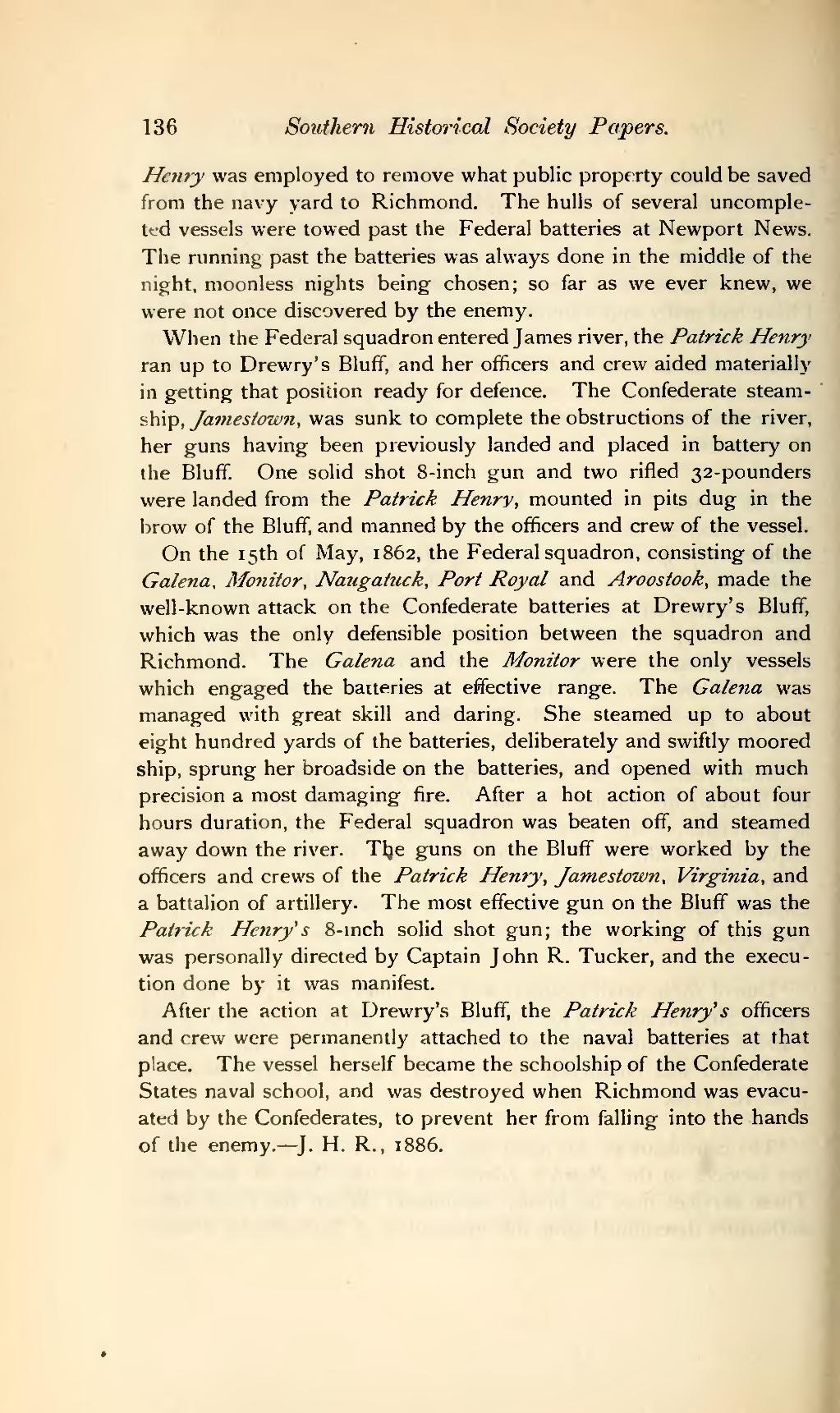136 Southern Historical Society Papers.
Henry was employed to remove what public property could be saved from the navy yard to Richmond. The hulls of several uncomple- ted vessels were towed past the Federal batteries at Newport News. The running past the batteries was always done in the middle of the night, moonless nights being" chosen; so far as we ever knew, we were not once discovered by the enemy.
When the Federal squadron entered James river, the Patrick Henry ran up to Drewry's Bluff, and her officers and crew aided materially in getting that position ready for defence. The Confederate steam- ship, y^Wi^i'/^zt-'w, was sunk to complete the obstructions of the river, her guns having been previously landed and placed in battery on the Bluff. One solid shot 8-inch gun and two rifled 32-pounders were landed from the Patrick Henry, mounted in pits dug in the brow of the Bluff, and manned by the officers and crew of the vessel.
On the 15th of May, 1862, the Federal squadron, consisting of the Galeyia, Monitor, Naugatuck, Port Royal and Aroostook, made the well-known attack on the Confederate batteries at Drewry's Bluff, which was the only defensible position between the squadron and Richmond. The Galena and the Monitor were the onl}'^ vessels which engaged the batteries at effective range. The Gale?ia was managed with great skill and daring. She steamed up to about eight hundred yards of the batteries, deliberately and swiftly moored ship, sprung her broadside on the batteries, and opened with much precision a most damaging fire. After a hot action of about four hours duration, the Federal squadron was beaten off, and steamed away down the river. Tlje guns on the Bluff were worked by the officers and crews of the Patrick Henry, Jamestown, Virgi?iia, and a battalion of artillery. The most effective gun on the Bluff was the Patrick Henry s 8-mch solid shot gun; the working of this gun was personally directed by Captain John R. Tucker, and the execu- tion done by it was manifest.
After the action at Drewry's Bluff, the Patrick Henry s officers and crew were permanently attached to the naval batteries at that place. The vessel herself became the schoolship of the Confederate States naval school, and was destroyed when Richmond was evacu- ated by the Confederates, to prevent her from falling into the hands of the enemy.— J. H. R., 1886.
